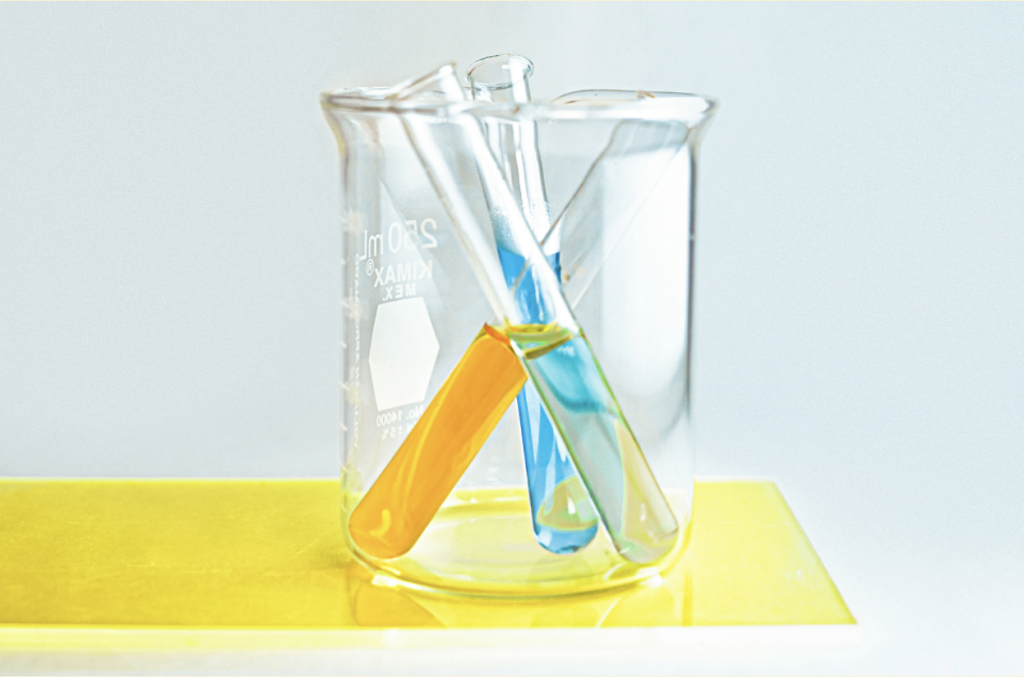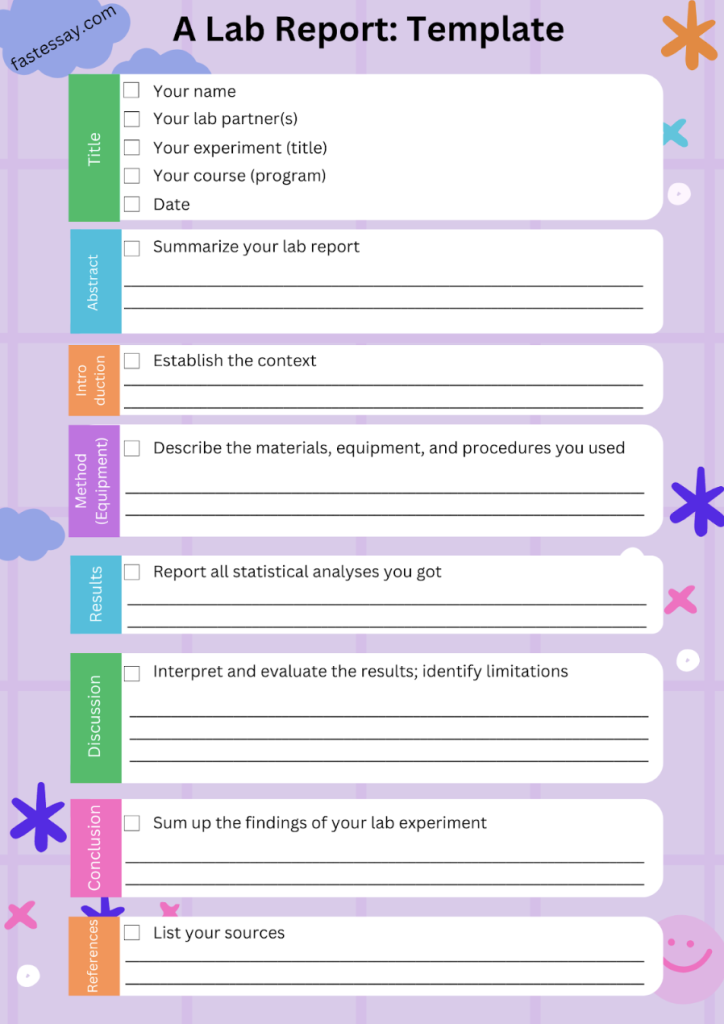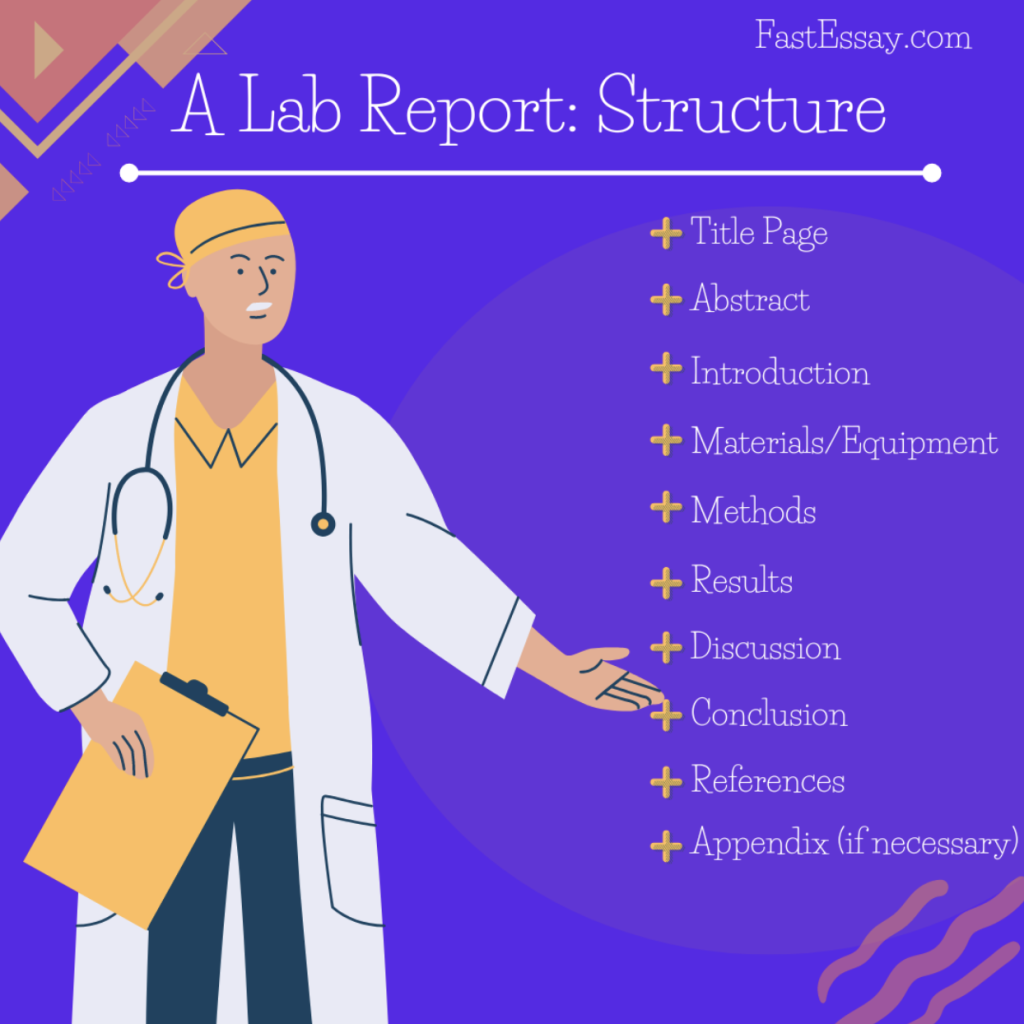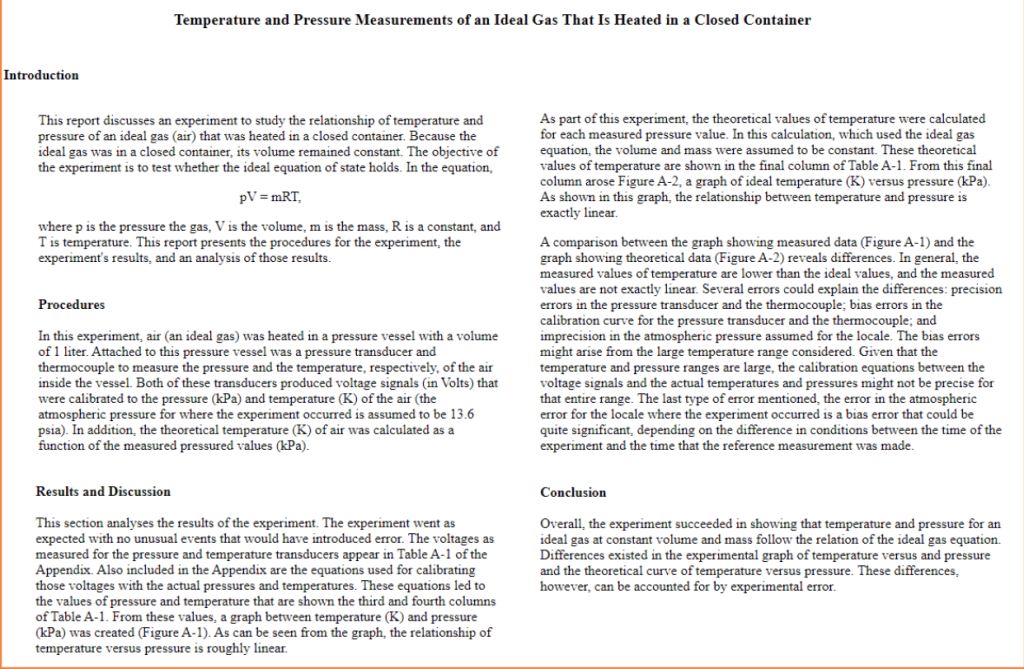You’ll often write lab reports when taking a science course in college. It’s busy work requiring clarity, accuracy, and critical thinking.
No wonder:
Lab reports are among the leading academic documents for sharing investigations with other scientists in your field. This type of paper has a unique style and format, which is challenging for some students to remember and follow.
In this blog post provided by our lab report writer, you’ll learn how to write a lab report fast.

What Is a Lab Report?
Let’s start with a definition:
A lab report is an academic paper overviewing your scientific experiment. It conveys the aim, methods you used, results of your experiment, and conclusions you can make based on those results.
Lab reports are a typical task for students of STEM disciplines. If you study science, technology, engineering, or mathematics, you’ll often run laboratory experiments and write reports on them.
Why do you need to write lab reports?
The purpose is to demonstrate your understanding of the subject and different scientific methods in your field. Performing a hands-on experiment, you learn the topic and enhance your analytical skills.
Lab reports are shorter and less complex than research papers. They consist of the following sections, each with its own purpose:
- Title — communicate the topic of your study
- Abstract — summarize your lab report (aims, methods you used for the described experiment, results, and conclusions)
- Introduction — establish the context for your audience to understand the topic
- Method — describe the materials, equipment, and procedures you used
- Results — report all statistical analyses
- Discussion — interpret and evaluate the results; identify limitations
- Conclusion — sum up the findings of your lab experiment
- References — list sources you used and cited in your report (follow the assigned citation style: APA or MLA)
Below are your practical tips on structuring all these sections and writing your lab report fast.
How to Write a Lab Report Fast
No matter how much time your lab experiment took, you want to write the report fast, right? Strict deadlines don’t sleep; you have many other incomplete assignments pending, so it would help to have some assistants at your side.
Templates will come in handy here.
Lab report template to save you time
Our academic experts have prepared a lab report template for you. Please feel free to use it as a detailed outline for your reports. It will allow you to save time on writing and ensure that you have included all the essential sections.

Fill in each block with the corresponding information to prepare your lab report for revising and proofreading. (Yes, it will be a rough draft that you’ll edit and improve later.)
Practical Tips on Writing Lab Report Sections
Having a template is great, but how do you know what to write on each section in your document?
Let’s start with general rules on lab report formatting and required length.
Your report should be concise, straightforward, and well-organized so that others can replicate the experiment you describe. The report length will depend on the experiment type or the requirements set by your instructor. (Most ask for five to ten pages, including all the appendices.)
How to format your lab report:
Unless otherwise specified by an instructor, the most common formatting style for lab reports is APA (American Psychology Association).
| Font: | Times New Roman, 12pt. |
| Spacing: | Double |
| Margins: | 1″ (all sides) |
| Indent: | 0.5″ |
| Page number: | the upper right corner |
| References (in the list): | Johnson, L. (2019). A lab report guide. Cambridge Press. |
| References (in-text): | (Johnson, 2019) |
This format is also appropriate for research papers, but it’s critical to understand the differences between these two academic documents. The lab report structure differs from the standard essay format: Research papers are usually longer, focusing on the existing data interpretation rather than conducting a hands-on experiment.
More than that:
Unlike research papers, laboratory experiments don’t require original arguments or hypotheses. You can take an existing one and conduct an experiment to check if it’s true.
So, here’s the standard lab report structure:

Now, let’s go to the details of each section and see how to write it like a pro.
Title
The title page of a lab report goes first.
It’s an initial section unless otherwise specified in the requirements. (It’s optional in some universities, while others may ask you to dedicate an entire page to your work’s title.)
It’s like a cover page for your lab report.
If you need to write a title page, include the following details there:
- The title of your experiment (For example, “Effects of Temperature and Salinity on Water’s Density”)
- Your name (For example, “Carter, Sarah”)
- Your lab partners, if you had any
- Course and program details
- The date when you wrote the report (For example, “9/21/2021”)
Often, it’s an instructor who gives the experiment title to you. If you don’t get any, you need to create it yourself. Your title doesn’t need to be creative but informative: State what you did.
Name your experiment in ten words or less, describing its primary point. Start with a keyword instead of an article (a, an, the).
Example:
❌ No: The Effects of Temperature Changes and Varying Salinities on the Density of Water
✅ Yes: Effects of Temperature and Salinity on Water’s Density
Abstract
Next, write a lab report abstract.
It’s a brief overview of the whole document, summarizing your experiment’s aims, methods, materials, results, and conclusion. Abstracts are about 150-250 words long; they allow readers to understand the context behind your research and see if it’s relevant to their interests.
As a rule, instructors don’t require this component for high school-level work, but college lab reports should have it. It’s a self-contained way to summarize your experiment’s procedures, results, and conclusions.
These steps will help you write a lab report abstract fast:
- State the topic of your experiment.
- Provide the context of your study: the question you are trying to answer, conditions, involved variables, and methods you used to collect data.
- Share primary findings and your interpretations.
- Specify the relevance and significance of your study for other scientists working in the same niche.
💡 Tip: Write it after you’ve drafted all other lab report sections. Thus, you’ll see the bigger picture and understand what to summarize about each section.
Note: Write your lab report’s abstract in the past tense.
Introduction
It’s a lab report’s first paragraph explaining your hypothesis and your experiment’s purpose. It’s the place to mention previous research on the topic (if there’s any) and provide background info a reader might need to understand your work.
In other words, set the scene for your experiment here.
These steps will help you write it:
- Begin with overviewing the broad research area and existing works on it.
- Narrow it down to your specific study focus.
- Define the key concepts you’ll use in your work.State your hypothesis, the purpose of
- your experiment, and the expected outcomes.
- Mention the significance of your study.
💡 Tip: Use your words and writing style rather than following a dry, templatized format. Hook readers and get them interested in your report’s further investigation.
❗ Important:
A lab report introduction may also include information about the variables and your conclusions. Please check the task requirements or consult your instructor whether you need to add this.
Hint: When describing existing theories and facts, use the present tense. Use the past tense when writing about the report’s purpose and other specifics. (Since your experiment is already over.)
Equipment/Materials
Some lab report templates combine this section with “Methods,” while others place it separately. This section explains what you used to gather data and perform the experiment (materials, equipment) and how you did it.
If you place this lab report component separately, ensure it’s highly detailed so that the audience (other scientists) can reproduce your methods and obtain the same results or gather extra data.
Methods
Some guides on lab report writing call this section a “Procedure.” It’s a section where you document the methods you used to collect data and describe the step-by-step process you followed during the experiment.
(If you didn’t craft a separate section for “Materials and Equipment,” please list all of them in your “Methods” passage.)
Follow these tips while writing:
- When listing the equipment, remember to include their specifications (weight, amount, etc.).
- Detail the procedures as much as possible; explain how you collected the data, what analytical methods and calculations you used, and other technical processes.
- If elaborating lists and steps with graphs, diagrams, or other visual elements, include them as an appendix rather than overburden “Methods” with additional information.
- Whenever applicable, discuss the limitations or errors and what you did to minimize them.
- If relevant, add the safety precautions and mention the protective equipment you used.
❗ Important: Describe the steps so an instructor sees you understand the experimental procedure. Use the past tense and write in the third person. Feel free to include a diagram of your experimental setup if necessary.
Results
This section is about your experiment’s findings. Please make sure to include key points and share the data you’ve analyzed: Present figures, graphs, and tables; include calculations you used to get the data and analyze it.
Some guidelines to follow:
- Start your “Results” with a summary of your key findings.
- Then, present significant data to highlight the patterns you observed.
- Use descriptive statistics to summarize the data.
- Communicate the significance of the test results and estimates of standard error.
💡 Tip: When representing your findings in graphs, tables, or diagrams, ensure that you give titles or numbers (Figure 1, Figure 2, etc.) to each element. That way, you will refer to them in your discussion.
❗ Important:
Only share the information you obtained during the experiment, not what you expected to get. Also, please don’t give an interpretation of that data; you’ll do that in the next section. Use the past tense and the third person when writing your “Results.”
Discussion
This section is where you demonstrate your understanding of the experimental process. The purpose is to showcase your critical thinking skills and communicate how the laboratory experiment results support your original hypothesis or stated objectives.
What do you write here?
- Compare your findings with your expectations.
- Explain any unexpected results, identifying the sources of experimental error.
(Could it happen because of inaccurate measuring liquid volume? Or, could you use an old balloon that has lost its elasticity?)
Please note: Even if your lab equipment didn’t work well, you still can write an A-worthy lab report. Your final grade doesn’t depend on whether you got the expected results; the trick is to discuss and interpret them correctly.
❗ Important: Resist the temptation of getting emotional or sharing your personal opinions here. It’s technical writing, so please continue to craft your lab report in the third person.
In this section, you can also suggest possible improvements for further studies on your topic.
Conclusion
It’s often one paragraph summarizing what happened in your experiment, whether it supported your initial hypothesis, and what that means.
Mention your expected results, findings, and their implications. Emphasize the significance of your study for further research.
Some lab reports don’t contain a “Conclusion” section because it overlaps with “Discussion.” Check the requirements from your instructors again and stick to the structure they defined.
Last but not least:
Double-check your lab report before submitting it for review: Ensure that it has no formatting issues, missing information, or grammar and syntax mistakes.
References
This section lists the sources you used while writing your lab report. Include all the bibliographic information in the required format.
(As mentioned, APA is the standard format for lab reports. Students of humanities may also use MLA, and those in business and history sometimes follow Chicago-style citations.)
Note: Some lab reports may also require you to mention previous research studies on your topic. If so, list them at the end of your report.
Need a Lab Report Sample?
It’s better to see once than hear twice, right? Besides the tips on what to include in every section of your lab report and how to write it, it would help to have a sample to address when in doubt.
Here it goes!

Click the link for the complete version with its appendix: Sample Laboratory Report by Virginia Tech. (It’s a standard, uncomplicated paper most undergraduate STEM students write in college.)
Want to Get Your Lab Report Fast?
So, let’s get this story short. You take a lab report template, fill it in with the information about your experiment, follow the formatting guidelines — and voila! Your lab report is ready. Pay precise attention to the “Discussion” section to make your work look professional.
And remember: You can always get help with lab report writing from our academic experts.

